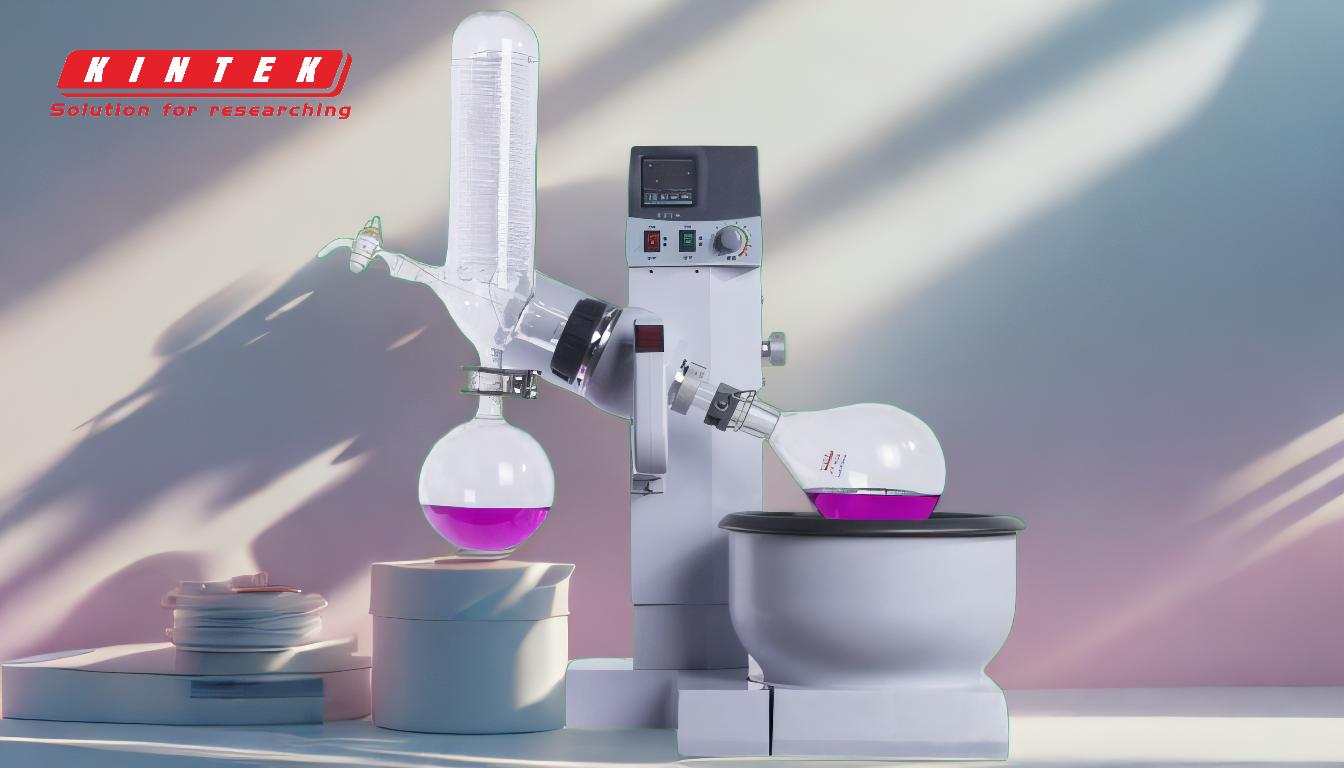The speed of a rotary evaporator, often referred to as its evaporation rate, is influenced by a combination of factors, including rotation speed, vacuum pressure, heating bath temperature, condenser efficiency, and the properties of the solvent being evaporated. These factors must be carefully balanced to optimize the evaporation process without damaging heat-sensitive samples or the equipment itself. The rotation speed of the flask is particularly critical, as it directly impacts the surface area of the solvent exposed to heat and vacuum, thereby influencing the evaporation rate. However, excessively high rotation speeds can lead to mechanical damage or reduced efficiency. Other factors, such as vacuum level and cooling water temperature, also play significant roles in determining how quickly a solvent can be evaporated and recovered.
Key Points Explained:

-
Rotation Speed of the Flask:
- The rotation speed of the flask is a primary factor in determining the evaporation rate. Faster rotation increases the surface area of the solvent exposed to heat and vacuum, which accelerates evaporation.
- However, excessively high rotation speeds can cause mechanical stress on the equipment, potentially leading to damage or reduced performance. It is essential to find an optimal speed that balances efficiency and equipment safety.
- Rotation speeds typically range from 50 to 280 RPM, depending on the solvent and the specific application.
-
Vacuum Pressure:
- The vacuum pressure inside the system lowers the boiling point of the solvent, allowing it to evaporate at lower temperatures. This is particularly important for heat-sensitive samples.
- A higher vacuum degree (lower pressure) generally increases the evaporation rate, but it must be carefully controlled to avoid bumping or foaming, which can lead to sample loss or contamination.
-
Heating Bath Temperature:
- The temperature of the heating bath directly affects the rate of evaporation. Higher temperatures provide more energy to the solvent, increasing its evaporation rate.
- However, the temperature must be carefully controlled to avoid overheating, which can degrade heat-sensitive samples or cause the solvent to boil too vigorously.
-
Condenser Efficiency:
- The condenser cools the solvent vapors, converting them back into liquid form for recovery. A more efficient condenser (e.g., one with a lower cooling water temperature) can handle higher vapor volumes, thereby increasing the overall evaporation rate.
- The type of condenser (e.g., cold finger, coil, or jacket) also impacts the efficiency of the system.
-
Solvent Properties:
- The type of solvent being evaporated plays a significant role in determining the evaporation rate. Solvents with lower boiling points evaporate more quickly under the same conditions.
- The viscosity and volatility of the solvent also influence the process, as more viscous solvents may require higher rotation speeds or temperatures to achieve the same evaporation rate.
-
Vessel Size:
- The size of the rotating flask affects the evaporation rate by determining the surface area available for evaporation. Larger flasks generally allow for faster evaporation due to the increased surface area.
- However, the vessel size is limited by the capacity of the rotary evaporator model, so it is important to choose an appropriate flask size for the specific application.
-
Balancing Factors for Optimal Performance:
- Achieving the fastest evaporation rate requires balancing all the above factors. For example, increasing the rotation speed, vacuum pressure, and heating bath temperature can all contribute to faster evaporation, but they must be carefully controlled to avoid damaging the equipment or the sample.
- It is also important to consider the specific requirements of the sample, such as its heat sensitivity and the desired purity of the recovered solvent.
In summary, the speed of a rotary evaporator is not a fixed value but rather a dynamic outcome influenced by multiple interdependent factors. By carefully adjusting and balancing these factors, users can optimize the evaporation rate to suit their specific needs while maintaining the integrity of both the equipment and the sample.
Summary Table:
| Factor | Impact on Evaporation Rate | Optimal Range/Considerations |
|---|---|---|
| Rotation Speed | Faster rotation increases surface area, accelerating evaporation. | 50–280 RPM, depending on solvent and application. Avoid excessive speeds to prevent damage. |
| Vacuum Pressure | Higher vacuum lowers boiling point, increasing evaporation rate. | Adjust to avoid bumping or foaming, which can cause sample loss or contamination. |
| Heating Bath Temperature | Higher temperatures increase evaporation but risk overheating heat-sensitive samples. | Control carefully to balance evaporation rate and sample integrity. |
| Condenser Efficiency | Efficient condensers handle higher vapor volumes, increasing overall evaporation rate. | Use lower cooling water temperatures and appropriate condenser types (e.g., coil, jacket). |
| Solvent Properties | Solvents with lower boiling points evaporate faster. Viscosity and volatility also play a role. | Choose solvents and adjust parameters based on boiling point, viscosity, and volatility. |
| Vessel Size | Larger flasks increase surface area, enabling faster evaporation. | Select flask size based on rotary evaporator capacity and application requirements. |
Optimize your rotary evaporator's performance—contact our experts today for personalized advice!












